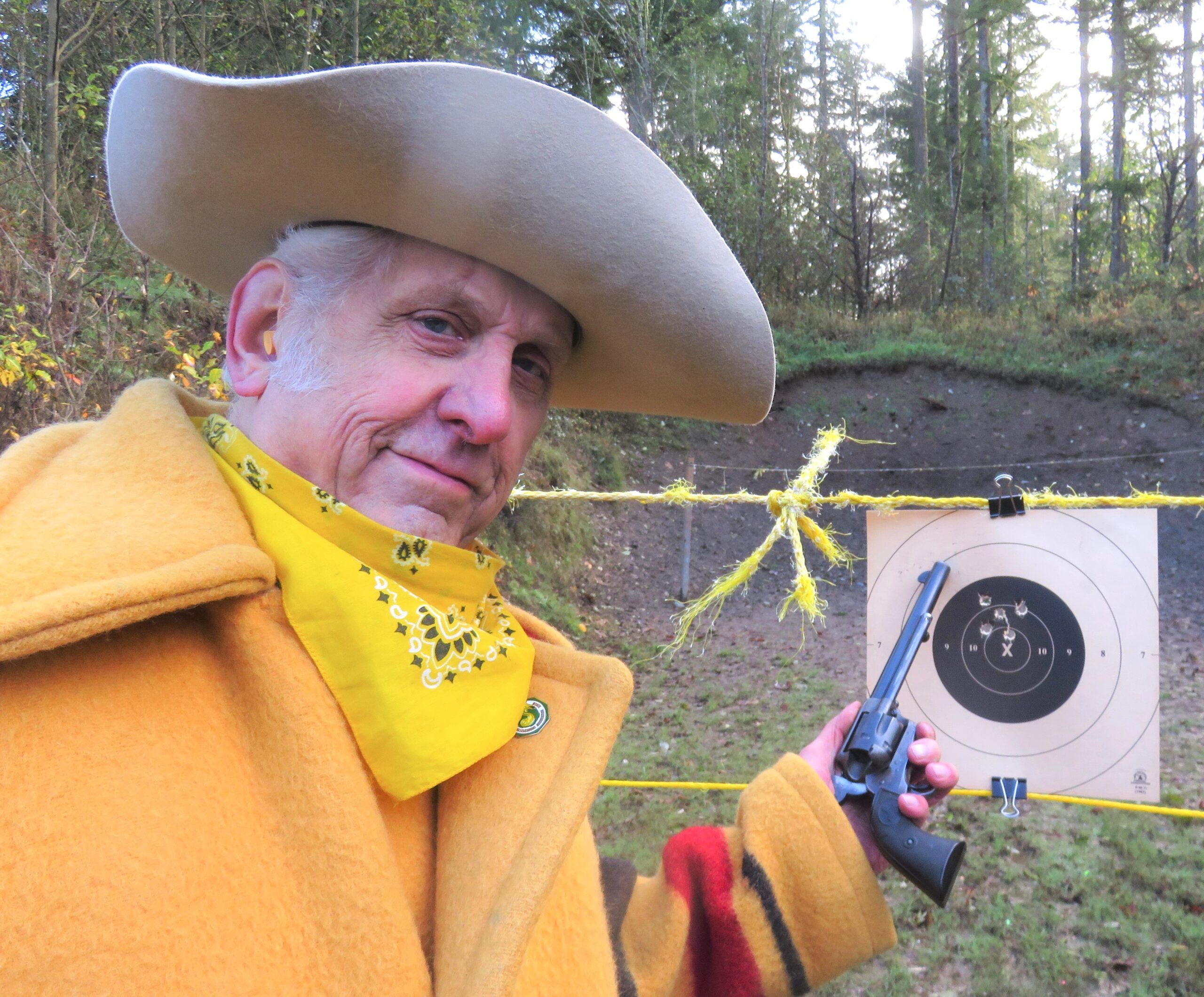
By Mike Nesbitt | Contributing Editor
The legendary Colt .45 is more than just something out of history, it’s still a real workhorse.
While that is being said as a general comment, it is also said while including black powder loads. Black powder, of course, is what this workhorse was fed back when it was introduced, in 1873. With a loading of 40 grains of black powder behind its 250- or 255-grain bullets, it was the most powerful revolver cartridge available. It remained our most powerful revolver cartridge until 1935 when it was finally dethroned by the .357 Magnum. But it took smokeless powders to beat the old Colt .45 and it is still tops for power when black powder revolver cartridges are considered.
Back in the early 1870s, the U.S. Army let the Colt company know they wanted a more powerful revolver cartridge, preferably in .45 caliber. Colt responded to that request with the Colt .45. Shortly after receiving and issuing the new Single Action Army revolvers in .45 caliber, the Army found it to be too powerful, mainly in recoil. So, the Army reduced the loading to 28 grains of powder and that is something we can do today with very good results.
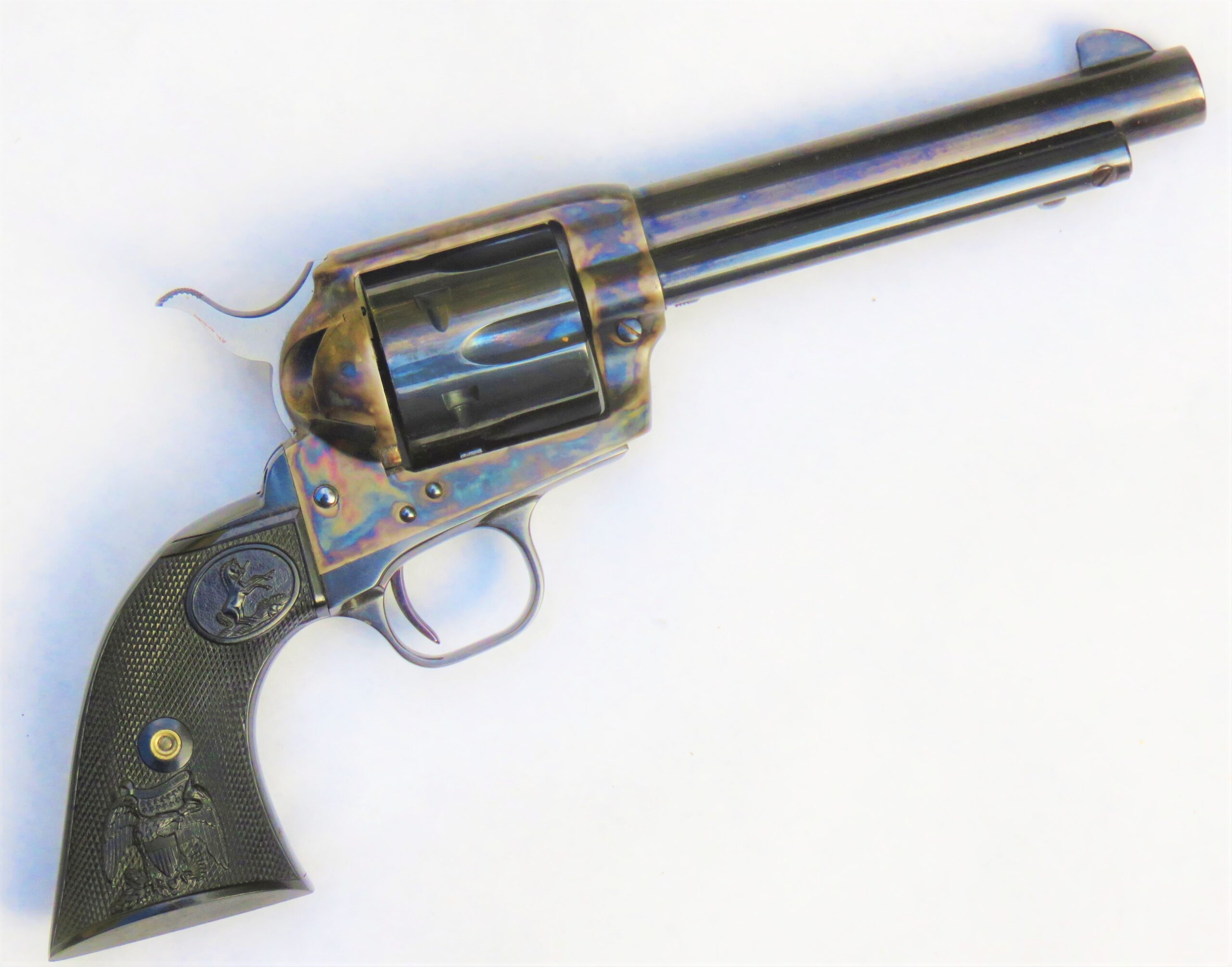
The recoil of the Colt .45 with a full loading of black powder can be something to behold, or try to hold… But that didn’t stop the Colt .45 from being the most popular cartridge in the Colt Single Action Army and it was also a top seller in Colt’s Double Action Army which was introduce in 1878. But those were the only “old” revolvers I know of that chambered the Colt .45 besides the Remington Model of 1875, which was an updated version of their Model 1858 percussion revolver.
Smith & Wesson had their own shorter .45 cartridge which is today referred to as the .45 Schofield. As newer revolvers were introduced, the Colt .45 was available in the Colt New Service and Smith & Wesson did chamber it in their N-framed Model 25. But the most popular .45 was the old “Thumb-buster” Single Action Colt, heavy recoil or otherwise.
WHEELGUN WEDNESDAY: .45 COLT CONTINUES TO ROCK
Yes, the Colt .45’s recoil was something to be considered back in the frontier days. Just over 50 years ago, I knew Ira Craker who told me that he was a U.S. Deputy Marshal in 1905, assigned to the Yakima, Washington area. He was in his mid-90s when I knew him and he told me several details about some of his experiences as a deputy marshal. But his comments about his guns are what I remember the best.
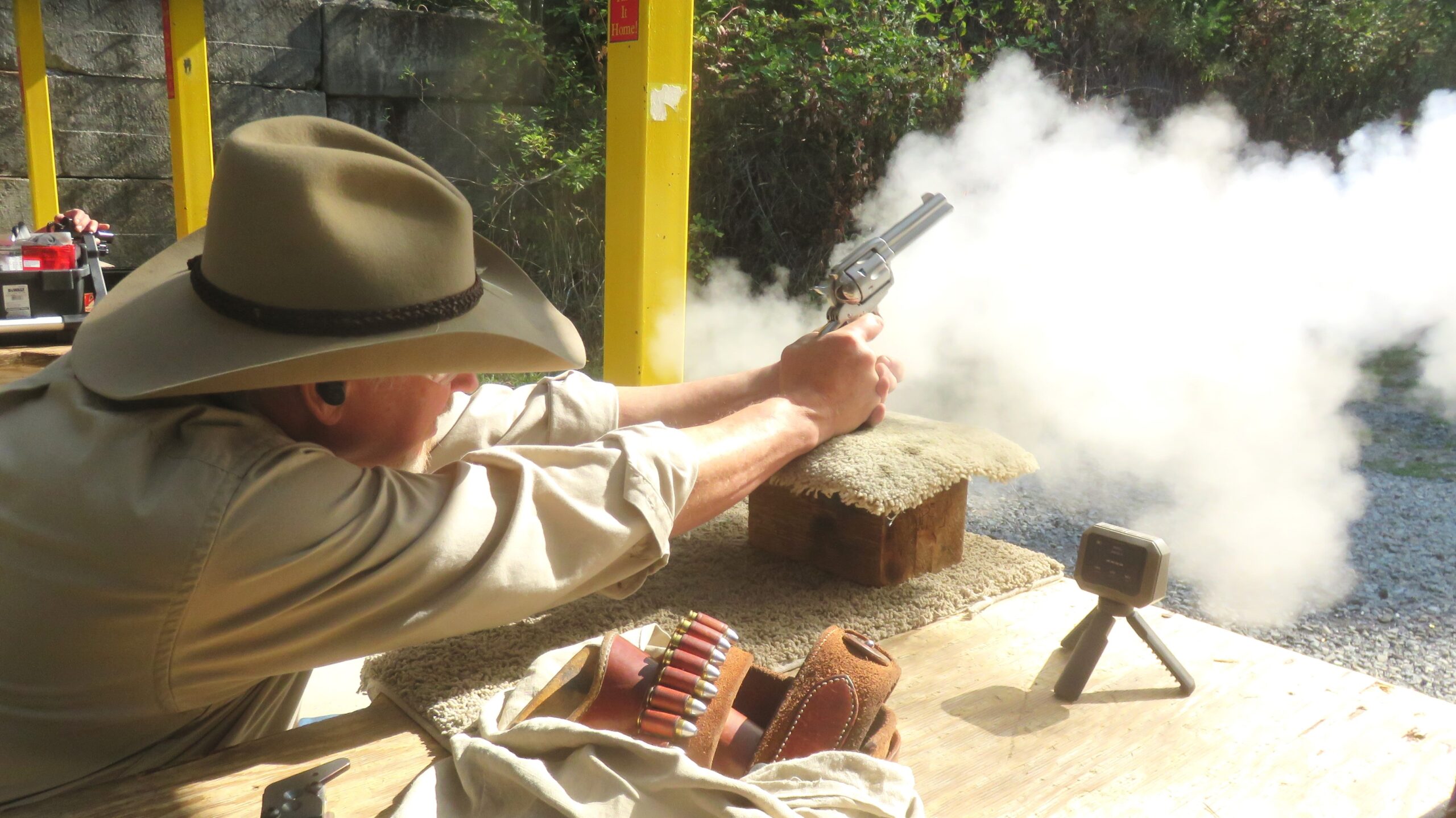
For a sidearm he carried a Single Action Colt with a 7 ½-inch barrel in .32-20 caliber because he didn’t like the recoil of the bigger guns, especially the Colt .45. His rifle was a Winchester Model 1894 in .32 Winchester Special. Craker claimed that his .32 W.S. had a 36-inch barrel and I quietly assumed he meant a 26-inch tube, although Winchester did make some very long barrels on special order, including .36 inches. I relate this part of Craker’s story here simply to show that not everyone favored the big .45s.
My own experience with the Colt .45 spans more than 60 years. My father had one, a Colt SA with a 5 ½-inch barrel and I shot that quite a bit. Then I got my own .45, another Colt but with a 7 ½-inch barrel, when I was just 17 and I still have that gun. It doesn’t get used as much as it did years ago, but it certainly is a treasured piece. In fact, if that gun could talk, it would probably remind me of some of the trails we traveled and the good shots that we made.
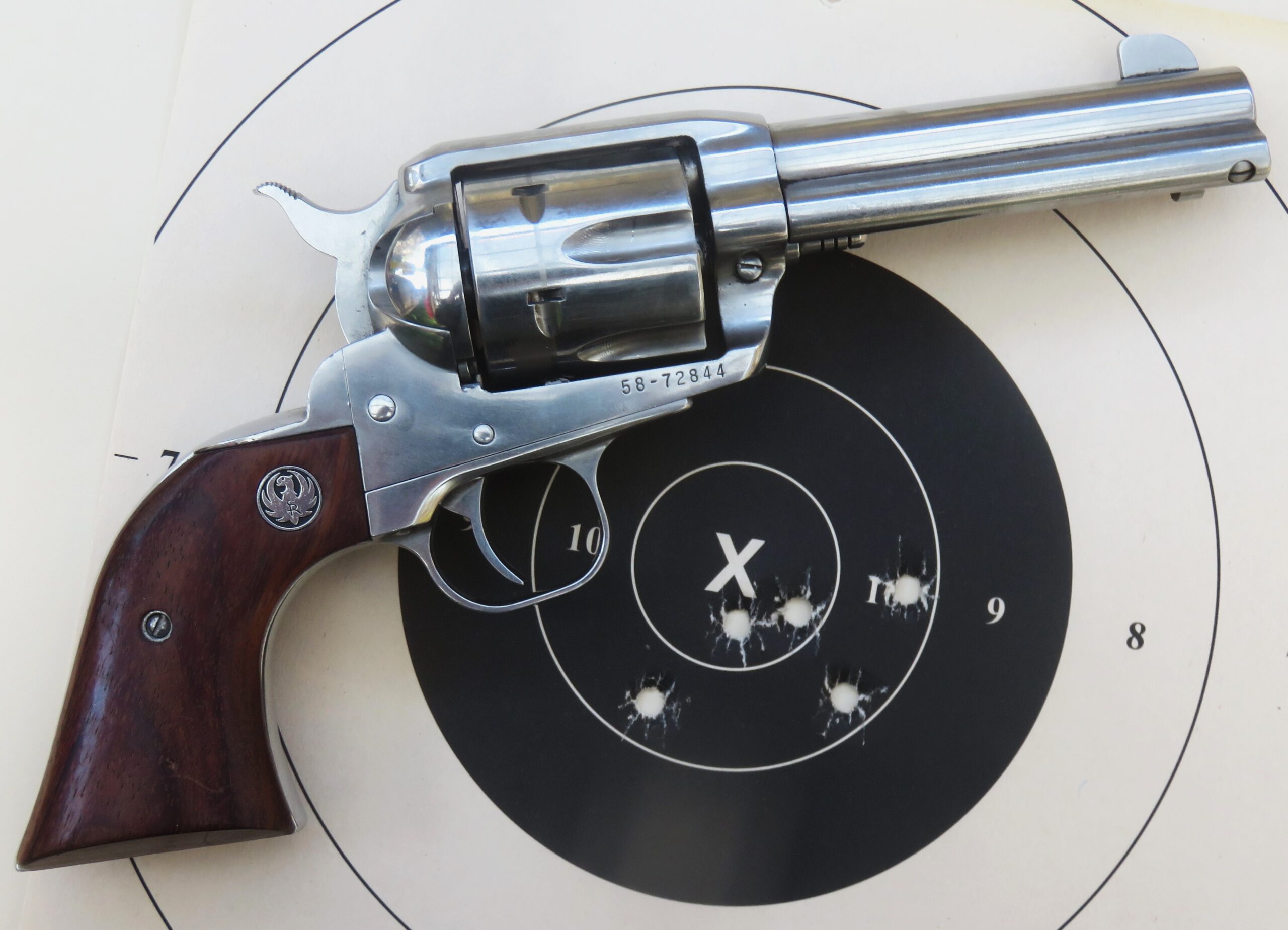
Most of my shooting with the Colt .45 was done with smokeless loads, using Lyman’s bullet #454190, and I still have and use that bullet mold. At this point let me explain, loads using smokeless powder do not have or share the same recoil as full black powder loads. One reason is because of the weight of the black powder, often four times the weight of the smokeless powder charges or even more. In the black powder loads, when ignition begins, that un-burned powder is pushed down the barrel right behind the bullet and, for that moment, the weight of the powder is basically added to the weight of the bullet. And, while still referring to the recoil of the full black powder loads, remember that the weight of the Single Action Colt in .45 caliber, with a 5 ½-inch barrel, is only 37 ounces.
Testing Loads
In order to see how the .45 acted with the original loading, five empty balloon-head cases (by Peters) were loaded with a full 40 grains of new Swiss 1 ½ Fg powder. Getting the 40 grains into the cases was no problem, although the powder was compressed by the 260-grain bullets from Lyman’s #454190 as the bullets were seated. I expected this load to roar with delight while attaining a velocity somewhere near the factory smokeless loads which had a velocity of 880 fps.
My Colt with the 7 ½-inch barrel was used and the first shot held some surprises. With a real roar, that load’s velocity was 1,018 fps! All five shots were fired and their average velocity was 992 fps. They even grouped rather well on the target. However, that load was on the extreme side and I do not recommend it. In my judgment those loads exceeded everything in comfort, safety, and common sense. They were not used again.
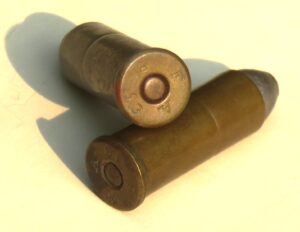
The Army, back in the old days, as I have mentioned, used just 28 grains of powder under the .45’s bullets. That was also the load for the .45 S&W Schofield. I tried that loading many years ago, when my father and I tried some black powder loads in our .45s. The 28-grain loadings were far easier to handle.
More recently, I tried shooting my .45 with a powder charge of 35 grains of Schuetzen 2Fg ignited by standard large pistol primers, loaded into the new Starline solid-head cases. Those loads were also on the heavy side, passing the chronograph screens at 952 fps, a few feet beyond the end of my Colt’s 7 ½-inch barrel. Accuracy with that load was excellent and I could see using that load again in situations where power and accuracy were both desired. That load has more ‘bounce to the ounce’ than needed for a good target load.
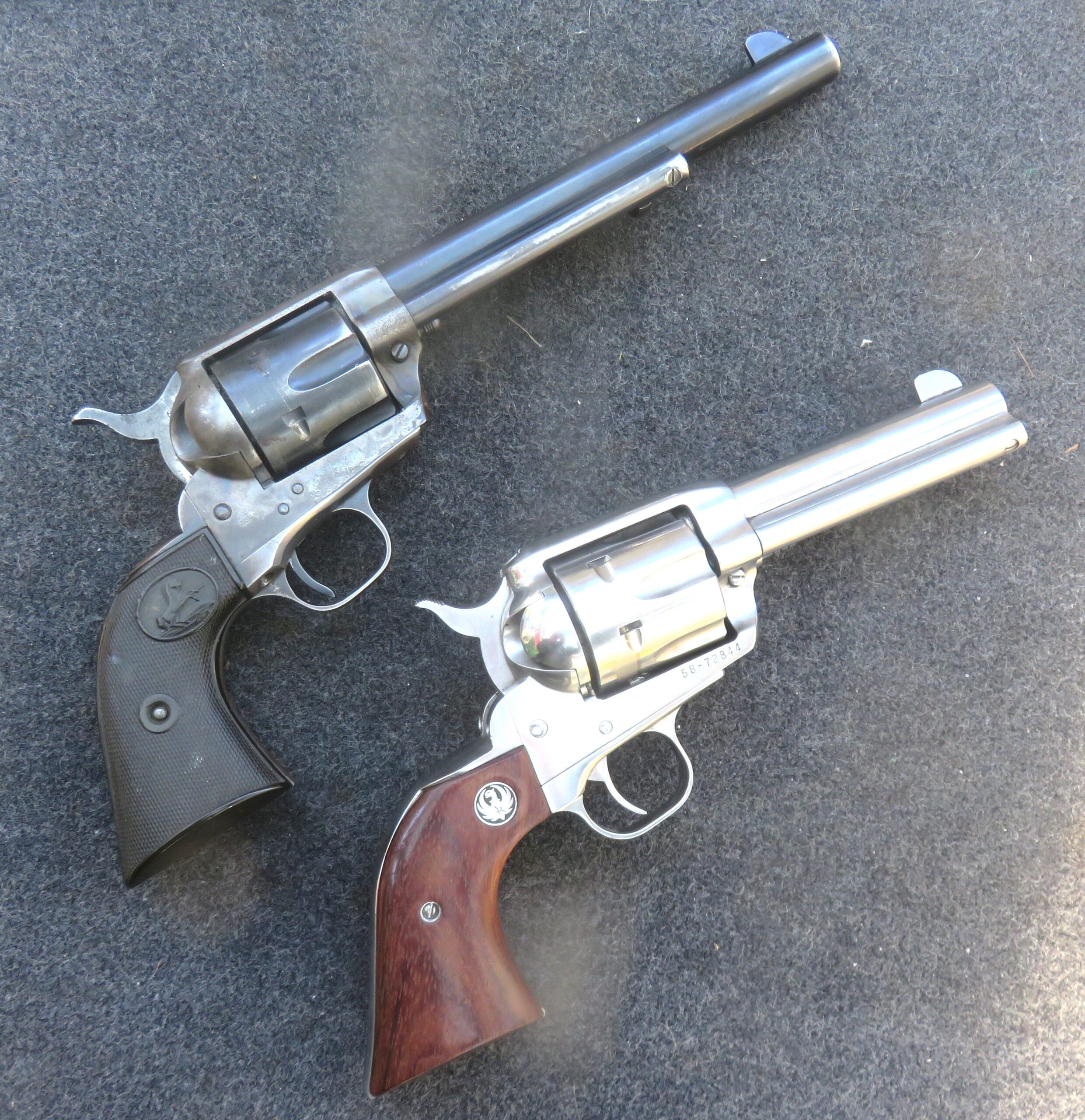
Here’s a black powder load that is my favorite. This uses 33 grains of Swiss 2Fg powder under the 260-grain bullet, from Lyman’s #454190 mold. Velocity from the 7 ½-inch barrel is an average of 911 fps and slower at 833 fps out of a 5 ½” barreled gun. This load will remain my favorite for its power and its accuracy, in my gun this grouped very well.
I’m not alone in using black powder loads in the old Colt .45. One outstanding .45 Colt shooter is often my partner, Mike Moran. The .45 he uses the most is one of the newer Ruger Vaquero guns, nickel plated and with a 4 5/8-inch barrel. Mike originally got his .45 to use in Cowboy Action Shooting using smokeless loads but quickly began using black powder when he joined in with Sharps shooting and black powder cartridge rifle competition.
Moran is a dog-gone good shot! He has outshot me for the last two years in the black powder revolver match that we hold at our Buffalo Camp, shooting at steel gongs and silhouettes on the black powder trail-walk. Most of that shooting is done with a two-hand hold but two of the targets require a one-hand hold. That revolver trail-walk at Buffalo Camp is a real test as well as a lot of fun, and it takes some good shooting to win the match.
To help put this story together, Moran went to the range with me and I asked him to give me a 5-shot group for a photo. Then I added something to that, I told him I wanted him to shoot the group from the bench, and we’d chronograph his loads at the same time. Mike said he had never fired his revolver from the bench before, so that was something new. And he shot a very nice target for me, scoring a 50-2X. Even so, he said he could do better by shooting offhand…
Actually, I have seen him do better when shooting offhand. But I told him how his target with that good score was simply dandy. Also, he was shooting into the sun when he fired for that group, and that did make things a little tougher. But it is plain to see, Moran and that Ruger in .45 Colt caliber do get along together very well.
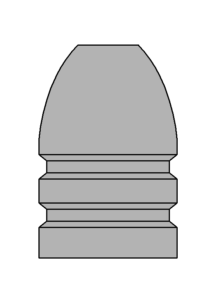
His loads use 30 grains of GOEX FFg powder under the 255-grain bullet cast from Accurate Molds #45-250D, which is a copy of the old Lyman/Ideal #454190. In the 4 5/8-inch barrel, that developed 751 fps. (A similar powder charge of either Olde Eynsford or Swiss powders should add more velocity.) If I needed a new mold for my .45, I think I’d go with that one from Accurate. They make good molds and I believe the lube grooves on the Accurate mold are just a bit larger than on the Lyman, which could certainly be a benefit while shooting black powder loads.
Usually, historians suggest that the military life for the old Colt .45 was generally over when the Army decided to begin using the .38 Long Colt in 1892. That really isn’t so and the Colt .45 cartridge, being much more of a man-stopper, was updated in 1909 for the Army and chambered in the double action New Service revolver by Colt.
The new Colt .45 ammunition for the Army was produced at Frankfort Arsenal and not loaded commercially. And that load was somewhat reduced when compared to earlier .45s, with a muzzle velocity of about 725 fps when using the standard 255-grain bullets. I have two of those later cartridges, both of which are head-stamped with 1913 as the date they were made.
Obviously, the Colt .45 was short-lived, militarily, after the introduction of the .45 ACP in 1911. However, for civilian use the Colt .45 has certainly lived on, always making a very good accounting for itself. Now the Colt .45 is over 150 years old. But it is still, and will always be, “the big one” of the black powder revolver cartridges.


